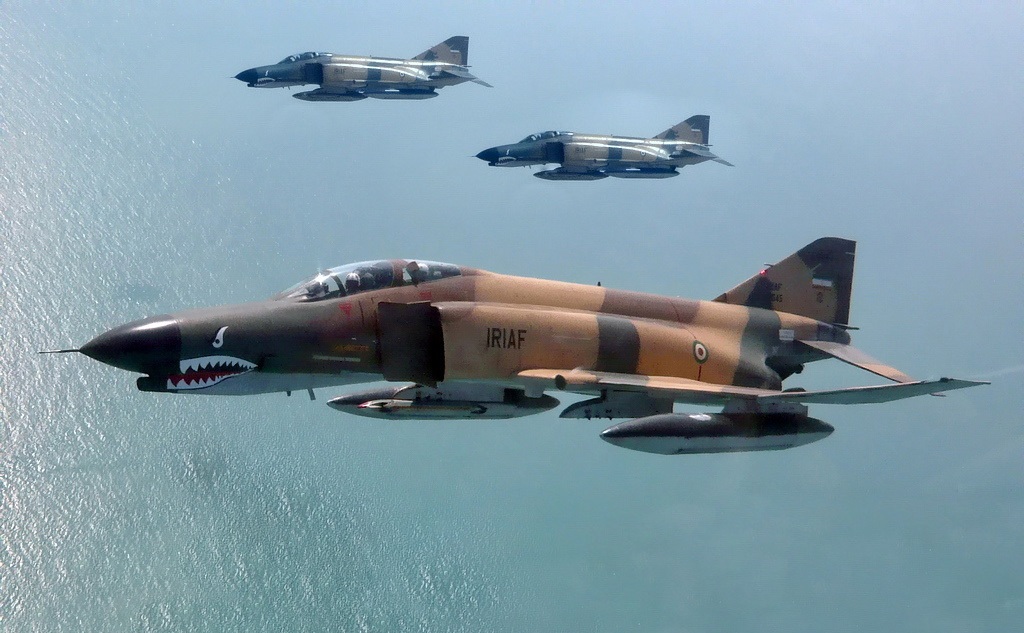December 12, 2014

The Islamic Republic is loudly denying that it has ever sent any warplanes into Iraqi airspace to attack the Islamic State, despite US officials’ confirmation that Iran has on a few occasions sent a few planes to attack troops of the Islamic State near the Iranian border.
The Iranian denials appear intended to calm Iraqis—both Sunnis and Shias—who choke at the thought of the Iranian military operating inside their country.
The issue erupted last week after Al-Jazeera, the Qatar-based television station, photographed a US-made F-4 Phantom jet on a bombing run about 40 kilometers (25 miles) from the Iranian border. (See last week’s Iran Times, page two.)
Iranian officials quickly denied the story. Iraqi President Heydar Al-Abadi also denied it. The official Iranian line is that Iran will be happy to provide aerial assistance if Iraq requests it, but Iraq has not requested it.
Some analysts believe Abadi approved the Iranian air strikes on the condition that Iran keep the attacks secret so as not to embarrass Abadi. Thus both parties moved swiftly to deny any Iranian involvement.
US officials said they knew of Iran’s involvement a while before the Al-Jazeera film. They expressed no concern. Iran’s operations have only been in the border zone while US warplanes are operating far to the west, so there is no prospect of them running into each other.
US Secretary of State John Kerry publicly offered his endorsement of the Iranian air strikes. “I think it’s self-evident that if Iran is taking on ISIL in some particular place, and it’s confined to taking on ISIL, and it has an impact, its net effect is positive,” Kerry said.
The number of Iranian air strikes is just a dozen or so, while the US-led coalition aircraft have carried out more than 1,100 air strikes in Iraq and Syria against the Islamic State since August.
On Saturday, The Guardian of Britain quoted Deputy Iranian Foreign Minister Ebrahim Rahimpur as confirming Iranian air strikes. But three days later, he said he had been misinterpreted. He said he was only speaking about the kinds of military assistance Iran could provide if Iraq requested it.
Babak Taghvai, who has frequently written about the Iranian Air Force, told the American website The Aviationist that Iran launched air raids in the border area for 15 days from November 18 through December 2, when Al-Jazeera photographed the Iranian plane. He said the Iranian Air Force used American F-4s and F-5s and Russian-made Sukhoi-24s.
Interestingly, Iran did not use any of the combat aircraft it claims to have built itself, which begs the question of whether Iranian officers have any faith in those planes. They could not be trying to hide the nationality of the planes and to suggest they might be American because the United States no longer flies any F-4s or F-5s.
Before the silence order went out, Majlis Deputy Hamid-Reza Taraghi was also quoted as confirming the attacks. “Iran regards the area [adjacent to the border] as a buffer zone and does not tolerate any military threats within that buffer zone,” he said, adding the Iraq “asked us to be quiet about it.”
Michael Rubin, a military analyst at the American Enterprise Institute in Washington, DC, expressed some concern about the Iranian air strikes. He said Iran could not have hit targets without intelligence gathered by the Iraqi military, indicating closer ties than he liked. He also expressed fear that Iraqi officers may have given Iran intelligence they had received from the United States. But no US officials publicly expressed any such concerns.
The Wall Street Journal, however, quoted unnamed Pentagon officials as speculating last week that Iran’s goal was to use the air raids to fan sectarian fires inside Iraq. But Iran’s quick and repeated denials of any involvement did not appear to support that idea.






















